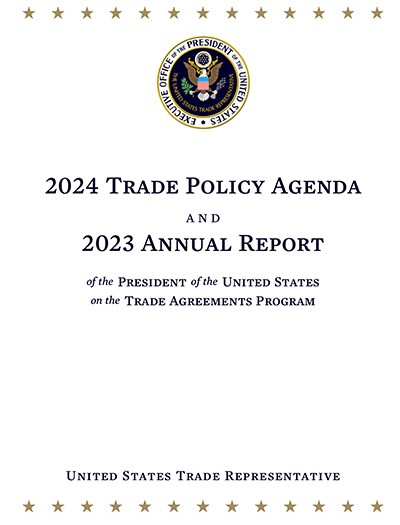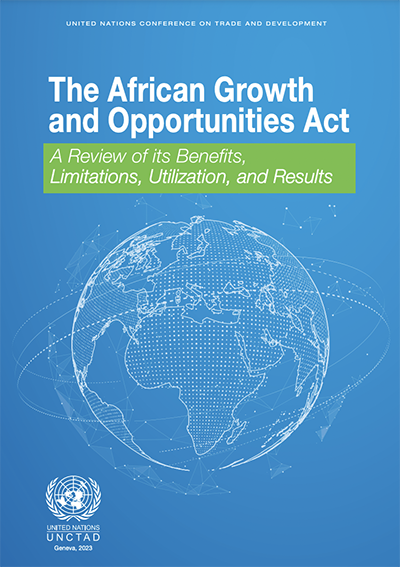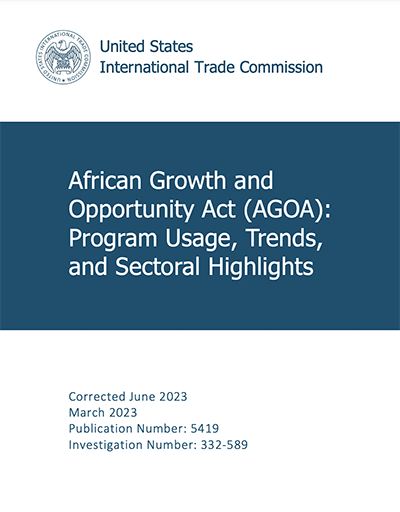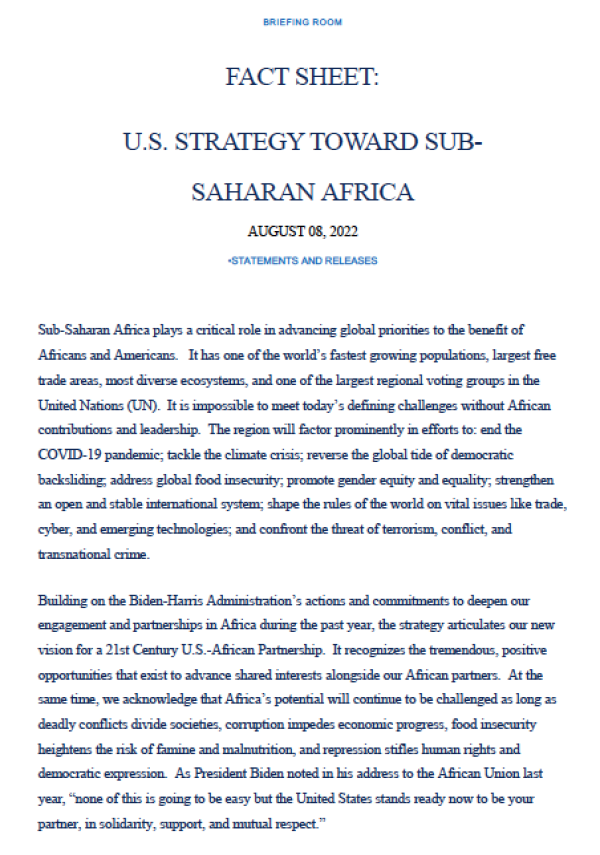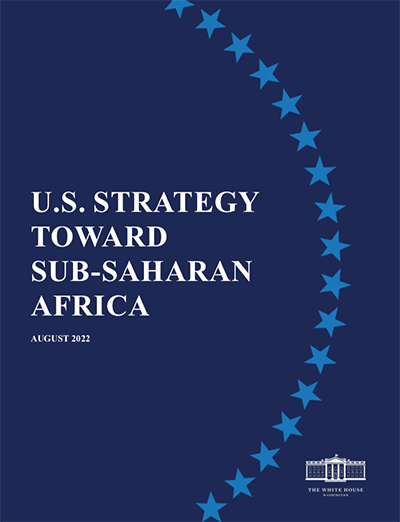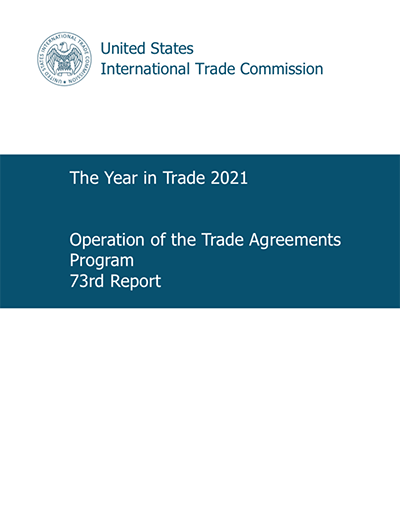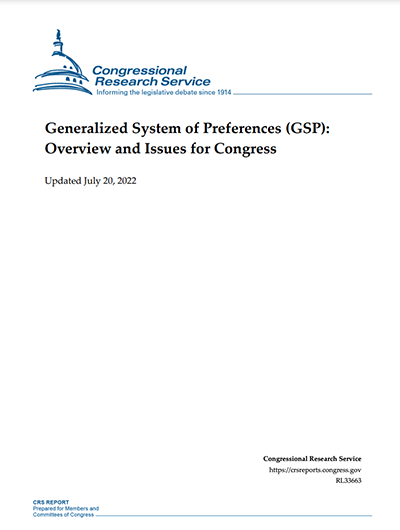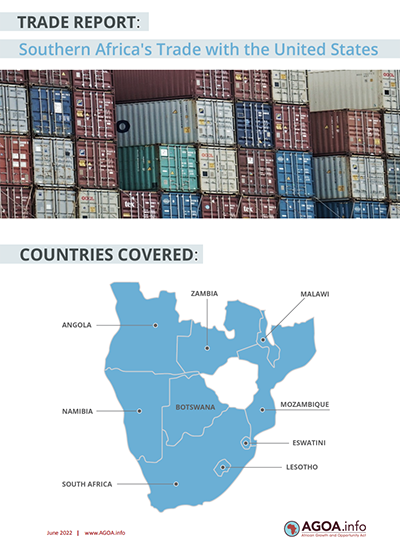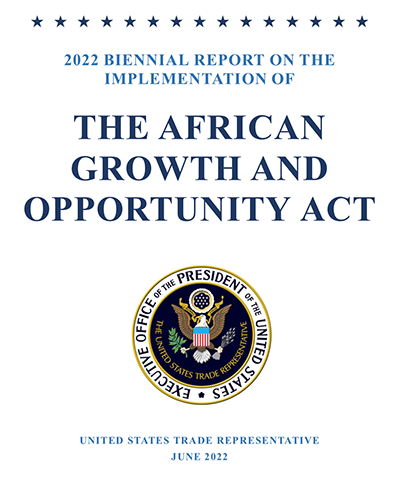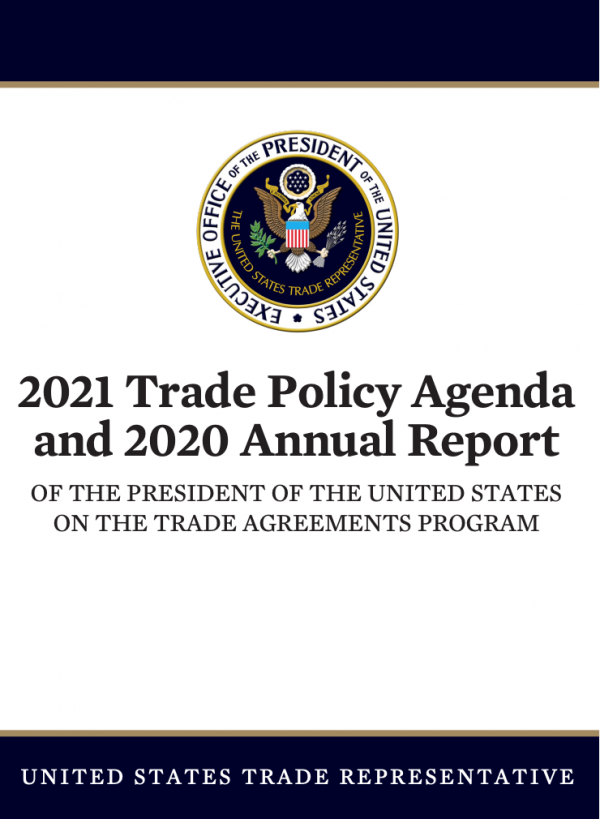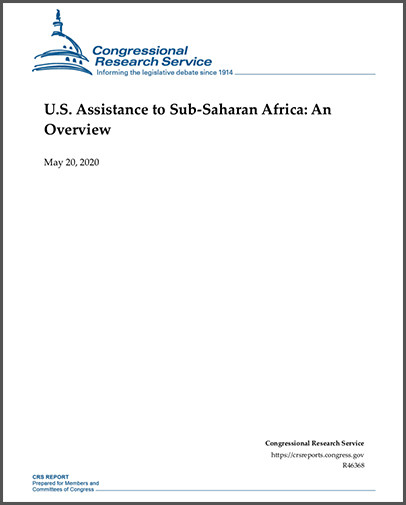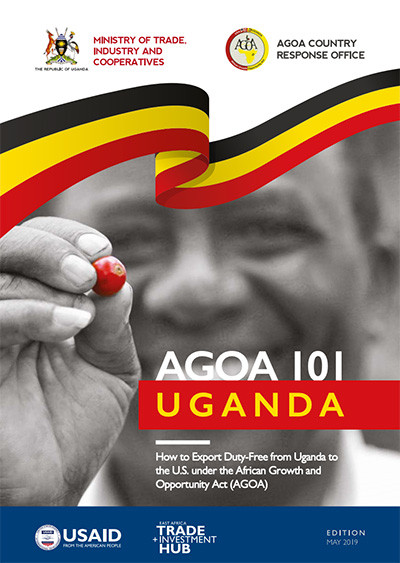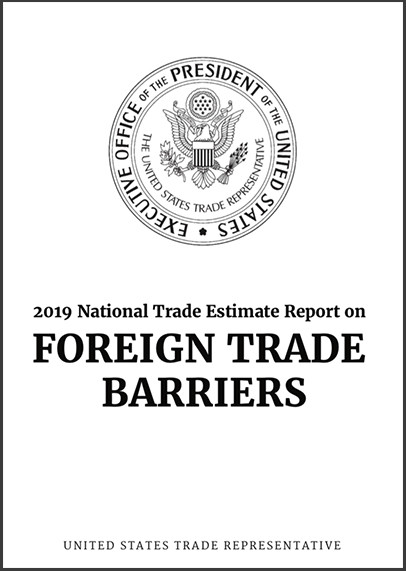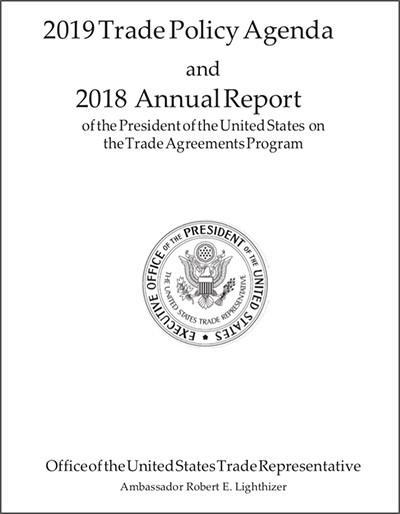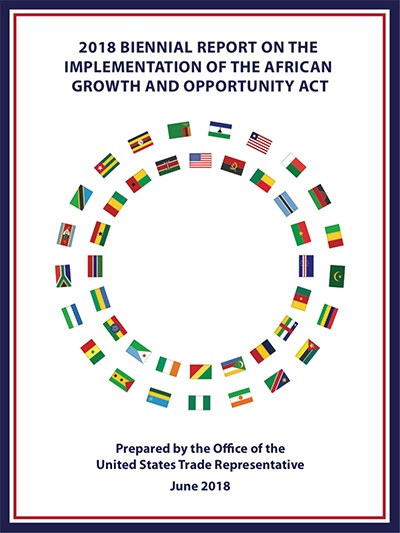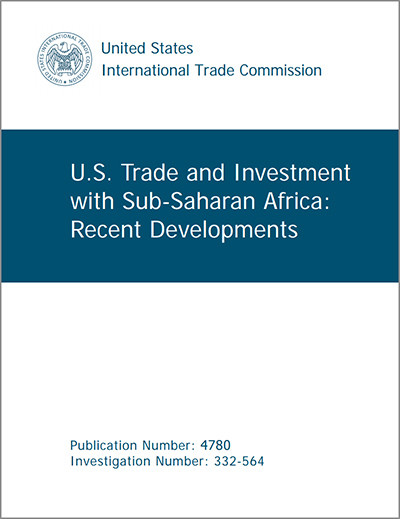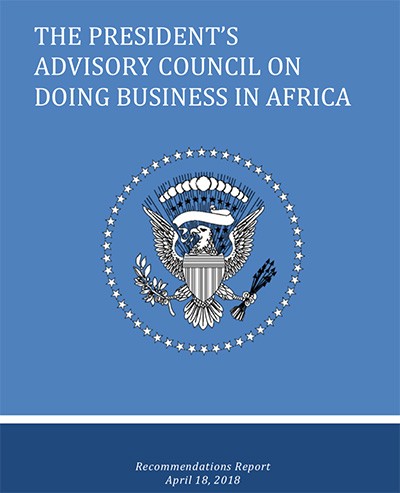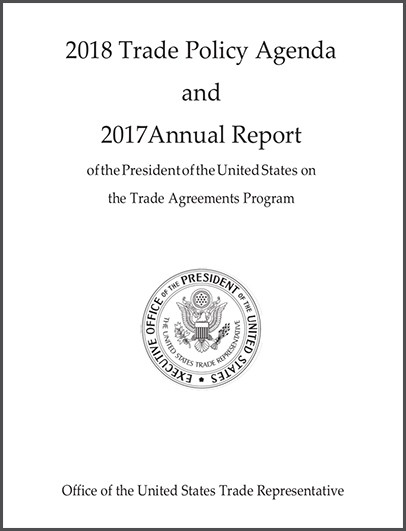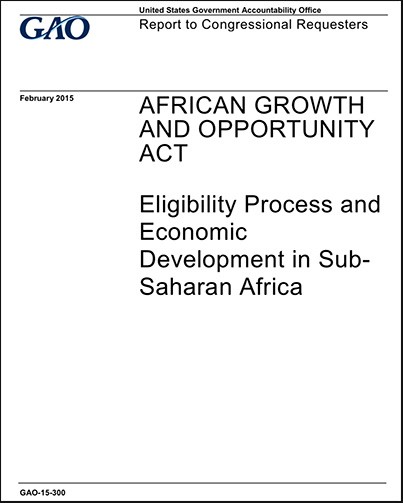Documents & Reports
2024 BIENNIAL REPORT ON THE IMPLEMENTATION OF AGOA
Section 110 of the Trade Preferences Extension Act of 2015 (“the Act”), 19 U.S.C. § 3705 note, states that the President shall submit a report to Congress on the trade and investment relationship between the United States and sub-Saharan African countries no later than one year after the enactment of the Act, and biennially thereafter. This reporting function was delegated to the United States Trade Representative (USTR) in Executive Order 13720 of February 26, 2016. The USTR, on behalf of the President, last submitted this report under this provision in June 2022. The current report covers the period since then (July 2022 to the present). As required by the legislation, the report provides a description of the status of trade and investment between the United States and sub Saharan Africa, changes in country eligibility for AGOA benefits, an analysis of country compliance with the AGOA eligibility criteria, an overview of regional integration efforts in sub-Saharan Africa, and a summary of U.S. trade capacity building efforts.
2024 Trade Policy Agenda and 2023 Annual Report
The 2024 Trade Policy Agenda and 2023 Annual Report of the President of the United States on the Trade Agreements Program are submitted to the Congress pursuant to Section 163 of the Trade Act of 1974, as amended (19 U.S.C. § 2213). Chapter IV and Annex III of this document meet the requirements of Sections 122 and 124 of the Uruguay Round Agreements Act with respect to the World Trade Organization. This report includes an annex listing trade agreements entered into by the United States since 1984. This report also includes an annex on U.S. trade in 2023, for which goods trade data by country are for full year 2022 and full-year services data by country are for 2022 (latest data available). The Office of the United States Trade Representative (USTR) is responsible for the preparation of this document and gratefully acknowledges the contributions of all USTR staff to its writing and production. We note, in particular, the contributions of Brian Rose and Catherine White. Appreciation is extended to partner Trade Policy Staff Committee agencies.
Recent debates around South Africa's future AGOA eligibility and the potential impact on trade
This Trade Brief addresses recent developments and debates around AGOA, given lingering questions about South Africa’s future AGOA eligibility, and the potential impact on trade should AGOA preferences be lost. AGOA forms part of United States legislation and significantly opens the domestic market to qualifying exports from eligible Sub-Saharan beneficiary countries, removing import duties and having a created longer time horizons for such preferences. While these preferences are non-reciprocal, and have been extended to South Africa along with dozens of other Sub-Saharan developing and least-developed countries, they are not unconditional, and remain subject to the ongoing compliance and continuous assessment with the Act’s eligibility criteria. This Trade Brief highlights recent events insofar as they could possibly impact on South Africa’s future AGOA eligibility, and looks at some of the potential impacts on trade flows resulting from a loss of AGOA privileges. This more nuanced analysis considers existing sectoral trade, AGOA preference margins and current value chain realities, as well as the potential fall back of reverting to GSP access should this become a relevant option.
AGOA - A review of its benefits, limitations, utilization and results
This study on the African Growth and Opportunities Act was commissioned in 2022 by the United Nations Conference on Trade and Development. The four analytical sections that comprise this submission assess the AGOA program in progressively more specific levels. Section II addresses the overall relationship between poverty, trade preferences, and other instruments intended to promote economic development. The positive but limited impact of preferences can be seen in the utilization of the AGOA preferences, as reviewed in Section III. There differing experiences according to country and sector are assessed. The sectoral differences are examined more precisely in the next two sections, each of which address the United States International Trade Commission (USITC)’s stated intention to present case studies on cotton, apparel, certain chemicals, and cocoa. In Section IV the broader trends in United States imports of apparel, minerals, and other products from the region are reviewed. Section V turns to the question of whether AGOA preferences have helped beneficiary countries to upgrade their production and exports in hydrocarbons, cocoa, and cotton goods. Section VI concludes by providing specific considerations for the improvement of AGOA.
AGOA: Program usage, trends, and sectoral highlights (2023 Report)
[Updated report with June 2023 corrections] This report provides information on and analysis of the African Growth and Opportunity Act (AGOA) program in general and select industries in AGOA beneficiary countries. AGOA was signed into law on May 18, 2000, as part of the Trade and Development Act of 2000 and subsequently amended over the following two decades. It is currently in effect through September 30, 2025, as provided for in the AGOA Extension and Enhancement Act of 2015. AGOA is a trade preference program that grants duty-free access on certain products exported by qualifying sub-Saharan Africa (SSA) countries to the United States. A country desiring to benefit from AGOA must meet enumerated criteria before it is granted beneficiary status, and some countries have gained, lost, or re-gained this status over the life of the program. The impact of AGOA on beneficiary countries can be substantial within certain countries and sectors, especially apparel, but the broader influence on economic development and poverty reduction throughout SSA appears minimal.
2023 Trade Policy Agenda and 2022 Annual Report
The 2023 Trade Policy Agenda and 2022 Annual Report of the President of the United States on the Trade Agreements Program are submitted to the Congress pursuant to Section 163 of the Trade Act of 1974, as amended (19 U.S.C. § 2213). Chapter IV and Annex III of this document meet the requirements of Sections 122 and 124 of the Uruguay Round Agreements Act with respect to the World Trade Organization. This report includes an annex listing trade agreements entered into by the United States since 1984. This report also includes an annex on U.S. trade in 2022, for which goods trade data by country are for full year 2022 and full-year services data by country are for 2021 (latest data available).
Factsheet: US Strategy toward Sub-Saharan Africa (2022)
Sub-Saharan Africa plays a critical role in advancing global priorities to the benefit of Africans and Americans. It has one of the world’s fastest growing populations, largest free trade areas, most diverse ecosystems, and one of the largest regional voting groups in the United Nations (UN). It is impossible to meet today’s defining challenges without African contributions and leadership. The region will factor prominently in efforts to: end the COVID-19 pandemic; tackle the climate crisis; reverse the global tide of democratic backsliding; address global food insecurity; promote gender equity and equality; strengthen an open and stable international system; shape the rules of the world on vital issues like trade, cyber, and emerging technologies; and confront the threat of terrorism, conflict, and transnational crime.
US Strategy towards Sub-Saharan Africa (2022)
Sub-Saharan Africa is critical to advancing our global priorities. It has one of the world’s fastest growing populations, largest free trade areas, most diverse ecosystems, and one of the largest regional voting groups in the United Nations (UN). It is impossible to meet this era’s defining challenges without African contributions and leadership. The region will factor prominently in efforts to: end the COVID-19 pandemic; tackle the climate crisis; reverse the global tide of democratic backsliding; address global food insecurity; strengthen an open and stable international system; shape the rules of the world on vital issues like trade, cyber, and emerging technologies; and confront the threat of terrorism, conflict, and transnational crime. This strategy reframes the region’s importance to U.S. national security interests. In November 2021, Secretary of State Antony Blinken affirmed that “Africa will shape the future— and not just the future of the African people but of the world.” Accordingly, this strategy articulates a new vision for how and with whom we engage, while identifying additional areas of focus. It welcomes and affirms African agency, and seeks to include and elevate African voices in the most consequential global conversations. It calls for developing a deeper bench of partners and more flexible regional architecture to respond to urgent challenges and catalyze economic growth and opportunities. It recognizes the region’s youth as an engine...
USITC: The year in trade - 2021
This report is the 73rd in a series of annual reports submitted to the U.S. Congress under section 163(c) of the Trade Act of 1974 (19 U.S.C. § 2213(c)), under predecessor legislation, and pursuant to request. Section 163(c) states that “the International Trade Commission shall submit to the Congress at least once a year, a factual report on the operation of the trade agreements program.” This report is one of the principal means by which the U.S. International Trade Commission provides Congress with factual information on the operation of the U.S. trade agreements program for 2021. The “trade agreements program” includes “all activities consisting of, or related to, the administration of international agreements which primarily concern trade and which are concluded pursuant to the authority vested in the President by the Constitution” and by congressional legislation.
Generalized System of Preferences (GSP): Overview and Issues for Congress (July 2022 Update)
The U.S. Generalized System of Preferences (GSP) program provides nonreciprocal, duty-freetariff treatment to certain products imported to the United States from designated beneficiarydeveloping countries (BDCs). Congress first authorized the U.S. program in Title V of the TradeAct of 1974. The European Union and other developed countries have implemented similarprograms since the 1970s. Most recently, Congress extended the U.S. GSP program in DivisionM, Title V of the Consolidated Appropriations Act, 2018 (P.L. 115-141). This act extended theGSP program until December 31, 2020, as well as retroactively renewed it for the time period between December 31, 2017 (the previous expiration date) and April 22, 2018. The programexpired on December 31, 2020, before Congress passed legislation to reauthorize it.
Trade Report - Southern Africa's Trade with the United States
This trade data report provides insights into the trade flows between a number of Southern African AGOA beneficiary countries and the United States. The data is based on official U.S. import statistics. A general overview is provided with aggregate two-way trade between the Southern African country and the U.S. (imports, exports, balance of trade), in tabular and chart format. A second chart categorizes U.S. imports with each country by import category (AGOA, no preferences claimed, etc.). For each country, trade data by sector is shown for the past three years (2019-2021), along with 2022 data for the first quarter. This includes imports and exports, and further distinguishes U.S. imports by aggregate and by share of AGOA/GSP preference. Disaggregated data tables for each country show U.S. imports by HTS 4-digit classification, in descending order by value, irrespective of a product’s preference status. This provides greater insight into the leading tariff lines being imported into the U.S. from the country concerned. The final data table shows only products that entered the U.S. duty-free under AGOA/GSP preference, for each country, and indicates which tariff lines (at the HTS 8-digit level) are benefiting from these trade preferences.
2022 Biennial report on the implementation of AGOA
Section 110 of the Trade Preferences Extension Act of 2015 (“the Act”), 19 U.S.C. § 3705 note, states that the President shall submit a report to Congress on the trade and investment relationship between the United States and sub-Saharan African countries no later than one year after the enactment of the Act, and biennially thereafter. This reporting function was delegated to the United States Trade Representative (USTR) in Executive Order 13720 of February 26, 2016. The current report covers the period since then (July 2020 to the present). As required by the legislation, the report provides a description of the status of trade and investment between the United States and sub-Saharan Africa, changes in country eligibility for AGOA benefits, an analysis of country compliance with the AGOA eligibility criteria, an overview of regional integration efforts in sub-Saharan Africa, and a summary of U.S. trade capacity building efforts. As required by section 110, this report also fulfills the statutory requirements in the Act to report to Congress on potential trade agreements.
2022 Trade Policy Agenda and 2021 Annual Report
The 2022 Trade Policy Agenda and 2021 Annual Report highlight several notable accomplishments over the last year, including USTR’s work to promote sustainable environmental practices in trade policy, enforce existing agreements, improve the resilience of global supply chains, and combat the COVID-19 pandemic. It also details how USTR and the Biden Administration have re-aligned the United States-China bilateral trade relationship in order to defend the rights of American workers, farmers, producers, and businesses and ensure they can fairly compete on a level playing field.
US-Kenya trade negotiations: implications for the future of the US-Africa trade relationship
In February 2020, the United States and the Republic of Kenya announced the launch of negotiations to conclude a comprehensive and reciprocal free trade agreement (FTA) that would be the first of its kind between the United States and a sub-Saharan African country. The negotiations, announced by U.S. President Trump and Kenya’s President Kenyatta, marked an important development in recent U.S. engagement with Africa and, if successful, would represent the most significant innovation in U.S.-African trade relations since the enactment of the African Growth and Opportunity Act (AGOA) trade preference program in 2000. Just over one year later, an agreement has yet to be reached, presenting the Biden administration with a decision on whether to continue negotiations with Kenya. The conclusion of an FTA would undoubtedly signify an important shift in U.S. trade policy in the region. By adopting a reciprocal approach toward market access and other trade issues, the negotiation of a bilateral FTA between the United States and Kenya will have important ramifications for unilateral programs like AGOA, which was in fact intended to be a stepping-stone to a more mature U.S. trade relationship with African countries when it was developed over 20 years ago.
2021 Trade Policy Agenda and 2020 Annual Report
The 2021 Trade Policy Agenda and 2020 Annual Report of the President of the United States on the Trade Agreements Program are submitted to the Congress pursuant to Section 163 of the Trade Act of 1974, as amended (19 U.S.C. § 2213). Chapter IV and Annex III of this document meet the requirements of Sections 122 and 124 of the Uruguay Round Agreements Act with respect to the World Trade Organization. The discussion on the Generalized System of Preferences in Chapter II satisfies the reporting requirement contained in the Consolidated Appropriations Act, 2018 (Pub. L. 115-141, div. M, title V, § 501(c)). This report includes an annex listing trade agreements entered into by the United States since 1984. Goods trade data are for full year 2020. Full-year services data by country are only available through 2019.
US Assistance to Sub-Saharan Africa: An Overview
Overview: Congress authorizes, appropriates, and oversees U.S. assistance to sub-Saharan Africa (“Africa”), which received over a quarter of U.S. aid obligated in FY2018. Annual State Department- and U.S. Agency for International Development (USAID)-administered assistance to Africa increased more than five-fold over the past two decades, primarily due to sizable increases in global health spending and more incremental growth in economic and security assistance. State Department and USAID-administered assistance allocated to African countries from FY2019 appropriations totaled roughly $7.1 billion. This does not include considerable U.S. assistance provided to Africa via global accounts, such as emergency humanitarian aid and certain kinds of development, security, and health aid. The United States channels additional funds to Africa through multilateral bodies, such as the United Nations and World Bank.
US Trade and investment with Sub-Saharan Africa: Recent developments 2020 Report
This report provides information on U.S. trade and investment with sub-Saharan Africa (SSA). In particular, it analyzes the sectors in which U.S. trade in goods and services with SSA showed the strongest growth during 2016–18; identifies SSA countries for which U.S. exports, imports, and outward foreign direct investment (FDI) increased the most during the period; and highlights the main factors behind this growth. Focusing on several SSA countries, including South Africa, Nigeria, Kenya, Ghana, Rwanda, Ethiopia, and Côte d’Ivoire (called “key markets” in this report), the Commission used case studies to provide in-depth analysis of trends in four important areas: (1) the ways U.S. products and services integrate into key SSA value chains; (2) the intellectual property environment in the key SSA markets, and the effects of that environment on trade and investment; (3) technological innovations in SSA agricultural production and exports; and (4) the digital economy in SSA. In examining SSA’s digital economy, the report explores how the adoption of digital technologies affects other industries and how policies and market conditions affect digital trade. Further, this report summarizes recent developments in regional integration efforts in SSA, particularly the negotiation and implementation of the African Continental Free Trade Area. It also includes a summary of SSA countries’ utilization of preferential trade provisions under the African Growth and...
Mozambique: Politics, Economy, and US Relations
Mozambique, a significant recipient of U.S. development assistance, is a southeastern African country nearly twice the size of California, with a population of 27.9 million people. It achieved rapid growth following a post-independence civil war (1977-1992), but faces a range of political, economic, and security challenges. These include a political scandal over state-guaranteed, allegedly corrupt bank loans received by state-owned firms, which created public debt that the government did not disclose to the International Monetary Fund (IMF). This placed the country’s relations with the IMF at risk and has had major negative repercussions for the economy, donor relations, and Mozambique’s governance record. Other challenges include unmet development needs, a range of governance shortcomings, organized crime, an ongoing economic slump, and political conflict and violence involving both mainstream political actors and violent extremists.
AGOA 101 - Uganda Guide
The African Growth and Opportunity Act (AGOA) provides duty-free access to the U.S. market for over 6,000 products. This AGOA 101 manual outlines the step-by-step process that Ugandan businesses should take to export to the U.S. through AGOA. The guide provides additional information on the export of four high-demand, high-value sectors, namely coffee, cut flowers, fish, and textiles and apparel. Although exporting can be a challenging process, it can also be profitable if the individual or company successfully complies with the steps. Exporters must follow two sets of requirements: Ugandan laws and regulations that govern the export process, and laws and regulations that govern the destination country’s imports, in this case, the U.S. Regulations also vary according to the product being exported; exporters must research to ensure that their product meets the necessary requirements for export. This guide assumes that the exporter or potential exporter has already conducted the necessary market research, and is ready to export. Before proceeding, exporters must identify the correct tariff code and its eligibility for duty-free export under AGOA. This status can be established by referring to www.agoa.info/about-agoa/products.html. On that page, the user should insert the product name, search for the correct tariff code and confirm its AGOA status, denoted by the letter “D” in the AGOA indicator column. Exporters should familiarise themselves with U.S. industry...
2019 US National trade estimate report on foreign trade barriers
The 2019 National Trade Estimate Report on Foreign Trade Barriers (NTE) is the 34th in an annual series that highlights significant foreign barriers to U.S. exports, U.S. foreign direct investment, and U.S. electronic commerce. This document is a companion piece to the President’s 2019 Trade Policy Agenda and 2018 Annual Report, published by Office of the United States Trade Representative (USTR) in March.
2019 US Trade Policy Agenda and 2018 Annual Report
On March 1, 2019, the United States Trade Representative released President Trump’s 2019 Trade Policy Agenda and Annual Report, outlining how the Administration’s trade policies are benefitting American workers, contributing to the strongest U.S. economy in decades, and rebalancing America’s trade relationships and the global economy.
2018 AGOA Implementation Report
Section 110 of the Trade Preferences Extension Act of 2015 (“the Act”), 19 U.S.C. § 3705 note, states that the President1 shall submit a report to Congress on the trade and investment relationship between the United States and sub-Saharan African countries no later than one year after the enactment of the Act, and biennially thereafter. The U.S. Trade Representative, on behalf of the President, submitted the first report under this provision in June 2016. The current report covers the period since then. It provides a description of the status of trade and investment between the United States and sub-Saharan Africa, changes in country eligibility for AGOA benefits, an analysis of country compliance with the AGOA eligibility criteria, an overview of regional integration efforts in sub-Saharan Africa, and a summary of U.S. trade capacity building efforts.
US trade and investment with Africa: recent developments
This report was prepared by the U.S. International Trade Commission (Commission) at the request of the U.S. Trade Representative (USTR) in a letter received by the Commission on October 23, 2017. The USTR requested that this report provide information on the sectors in which U.S. trade in goods and services with sub-Saharan Africa (SSA) showed the fastest growth during the period 2010–16; highlight the key factors behind that growth; and identify the sectors and SSA markets that present the greatest potential for U.S. trade and foreign direct investment (FDI) with SSA. Further, the report describes exports of goods and services from U.S. small and medium-sized enterprises (SMEs) to SSA, provides country profiles of seven SSA countries, and summarizes SSA countries’ AGOA utilization strategies as well as the status of regional integration efforts.
The President's Advisory Council on doing business in Africa
The President’s Advisory Council on Doing Business in Africa advises the President, through the Secretary of Commerce, on ways to strengthen commercial engagement between the United States and Africa. Members receive no compensation for their efforts on the Council. This report was prepared by the private-sector members of the Council. The views expressed in this report do not necessarily reflect those of the Administration or individual members of the Council.
2018 Trade Policy Agenda and 2017 Annual Report
The 2018 Trade Policy Agenda and 2017 Annual Report of the President of the United States on the Trade Agreements Program are submitted to the Congress pursuant to Section 163 of the Trade Act of 1974, as amended (19 U.S.C. 2213). Chapter V and Annex II of this document meet the requirements of Sections 122 and 124 of the Uruguay Round Agreements Act with respect to the World Trade Organization. In addition, the report also includes an annex listing trade agreements entered into by the United States since 1984. Goods trade data are for full year 2017. Services data by country are only available through 2016.
Eligibility Process and Economic Development in Sub-Saharan Africa
The U.S. government uses the annual eligibility review process required by the African Growth and Opportunity Act (AGOA) to engage with sub-Saharan African countries on their progress toward economic, political, and development reform objectives reflected in AGOA's eligibility criteria. Managed by the Office of the United States Trade Representative, the review process brings together officials from U.S. agencies each year to discuss the progress each country is making with regard to AGOA's eligibility criteria and to reach consensus as to which countries should be deemed eligible to receive AGOA benefits. Over the lifetime of AGOA, 13 countries have lost AGOA eligibility, although 7 eventually had it restored (see figure). To encourage reforms, the U.S. government will engage with countries experiencing difficulty meeting eligibility criteria and may specify measures a country can take. For example, U.S. officials met with Swaziland officials over several years to discuss steps to improve labor rights. However, Swaziland did not make the necessary reforms and lost eligibility effective in January 2015.



